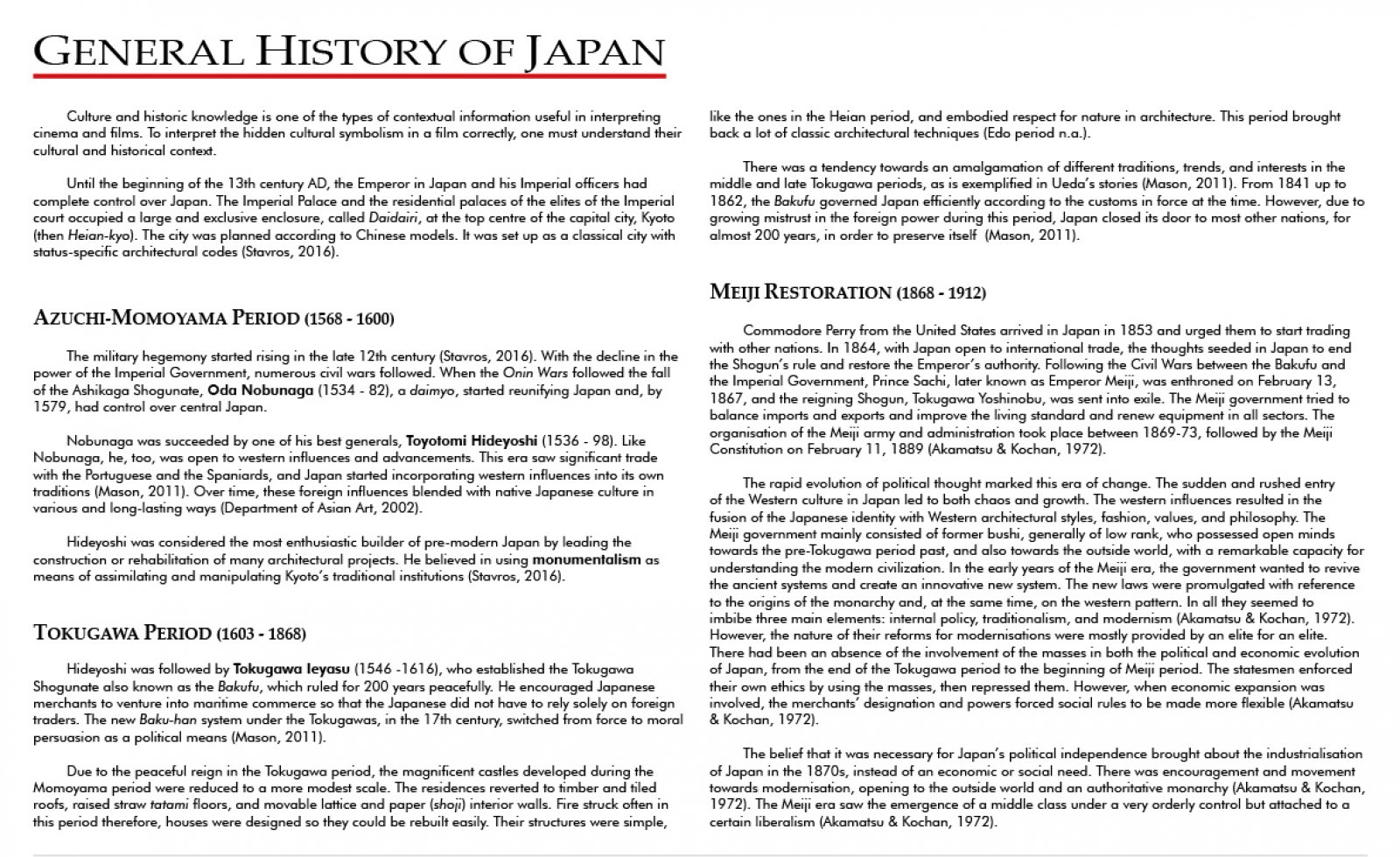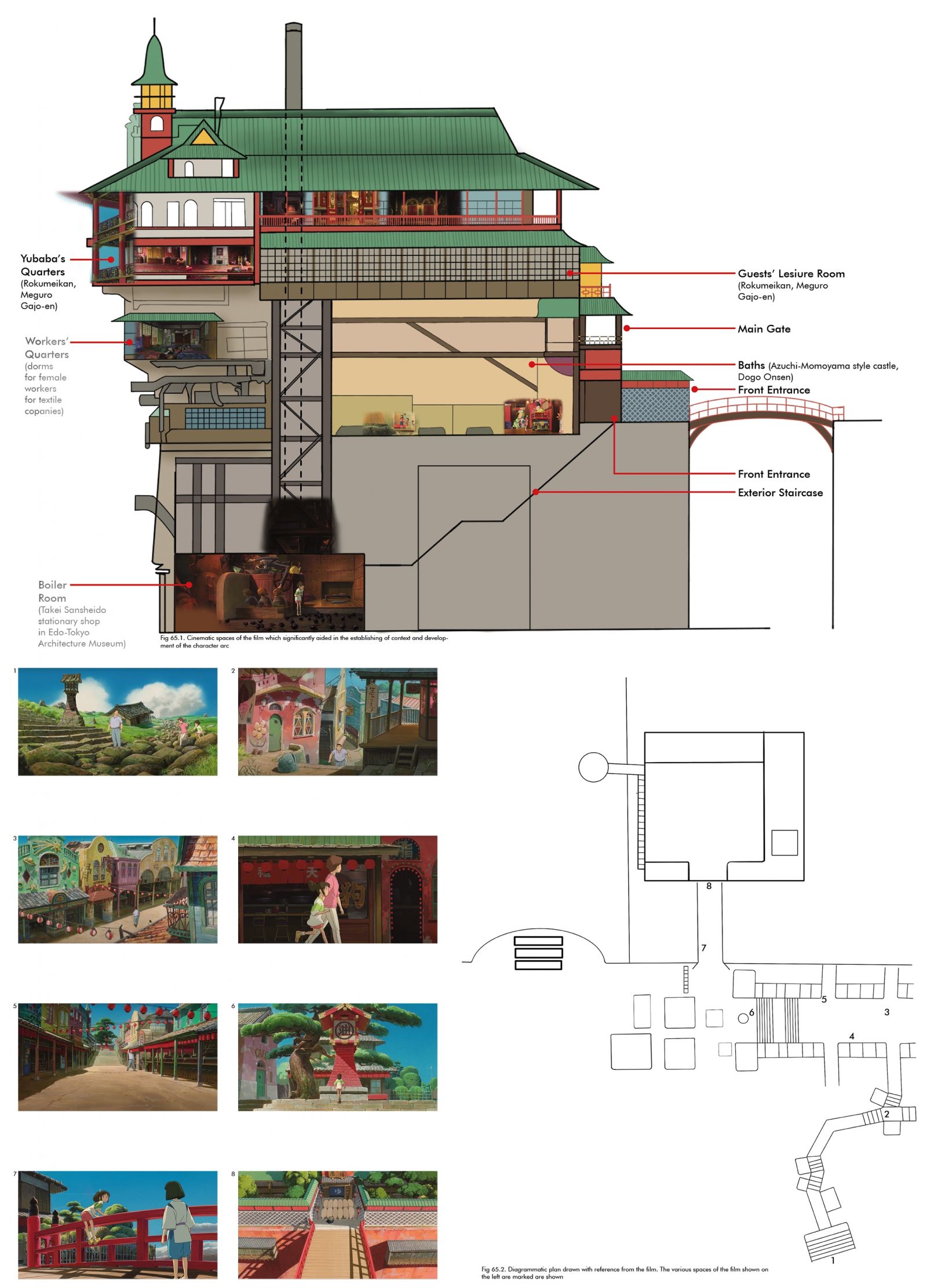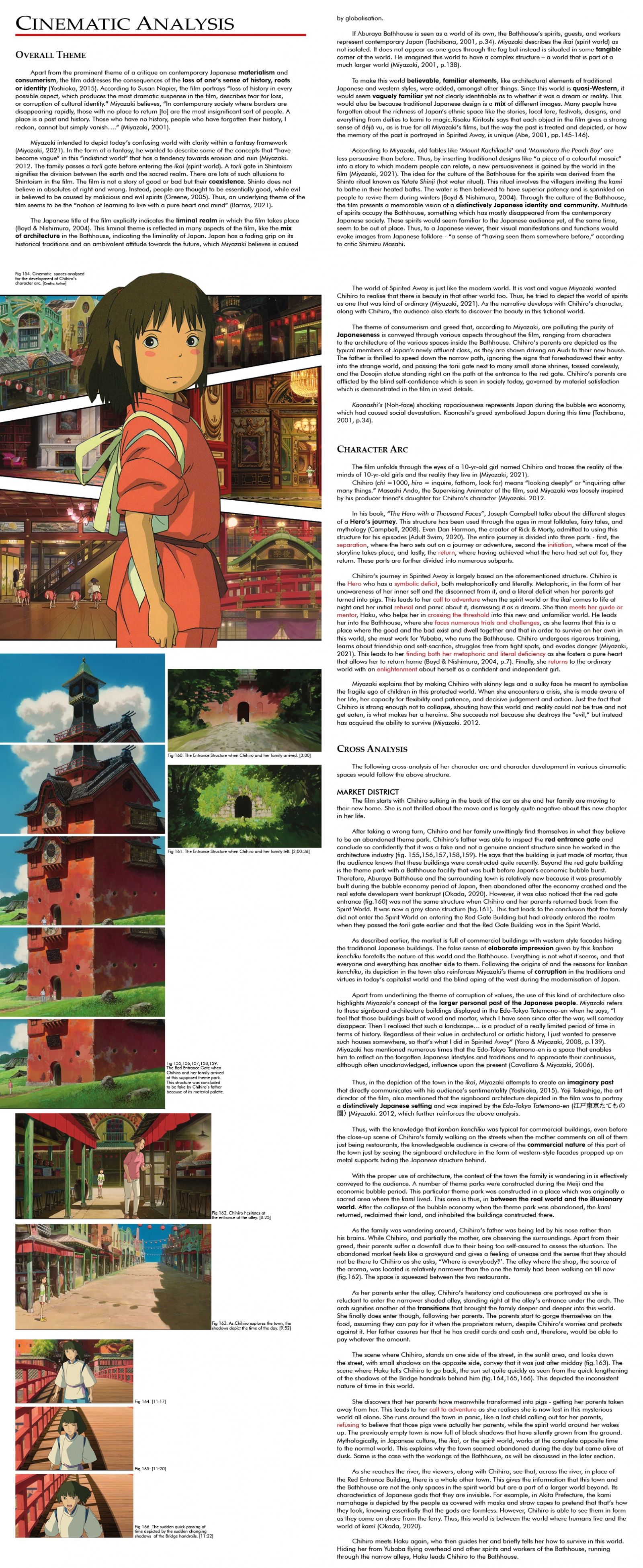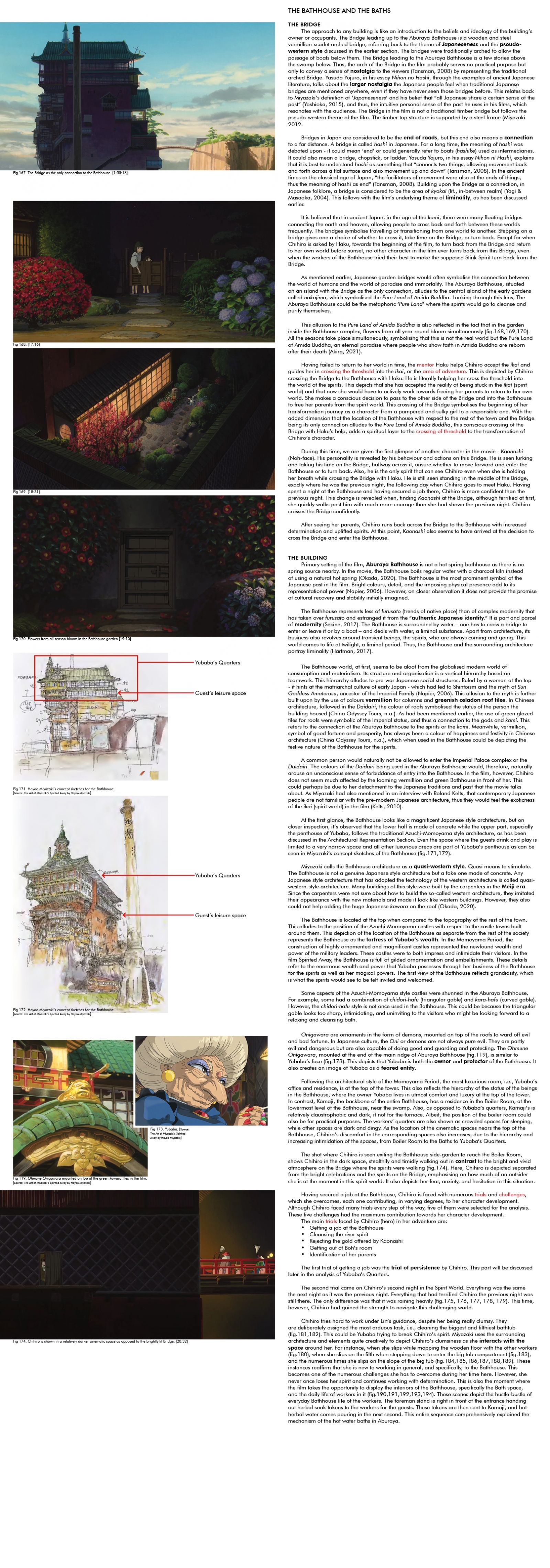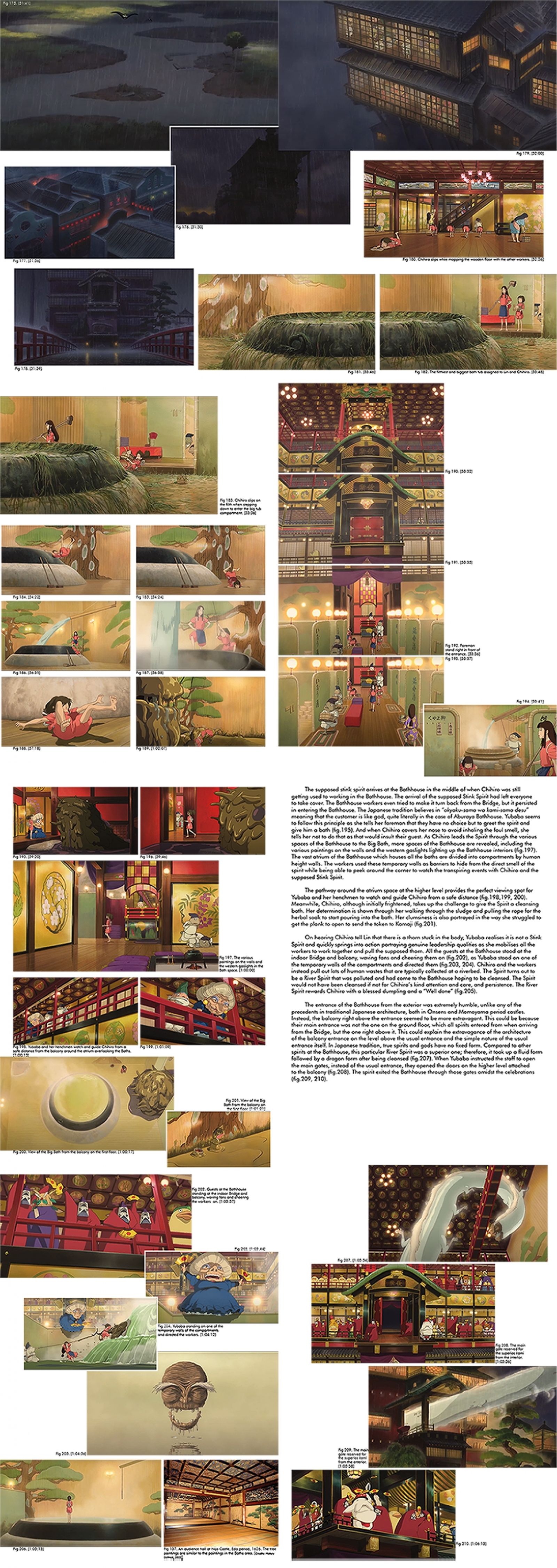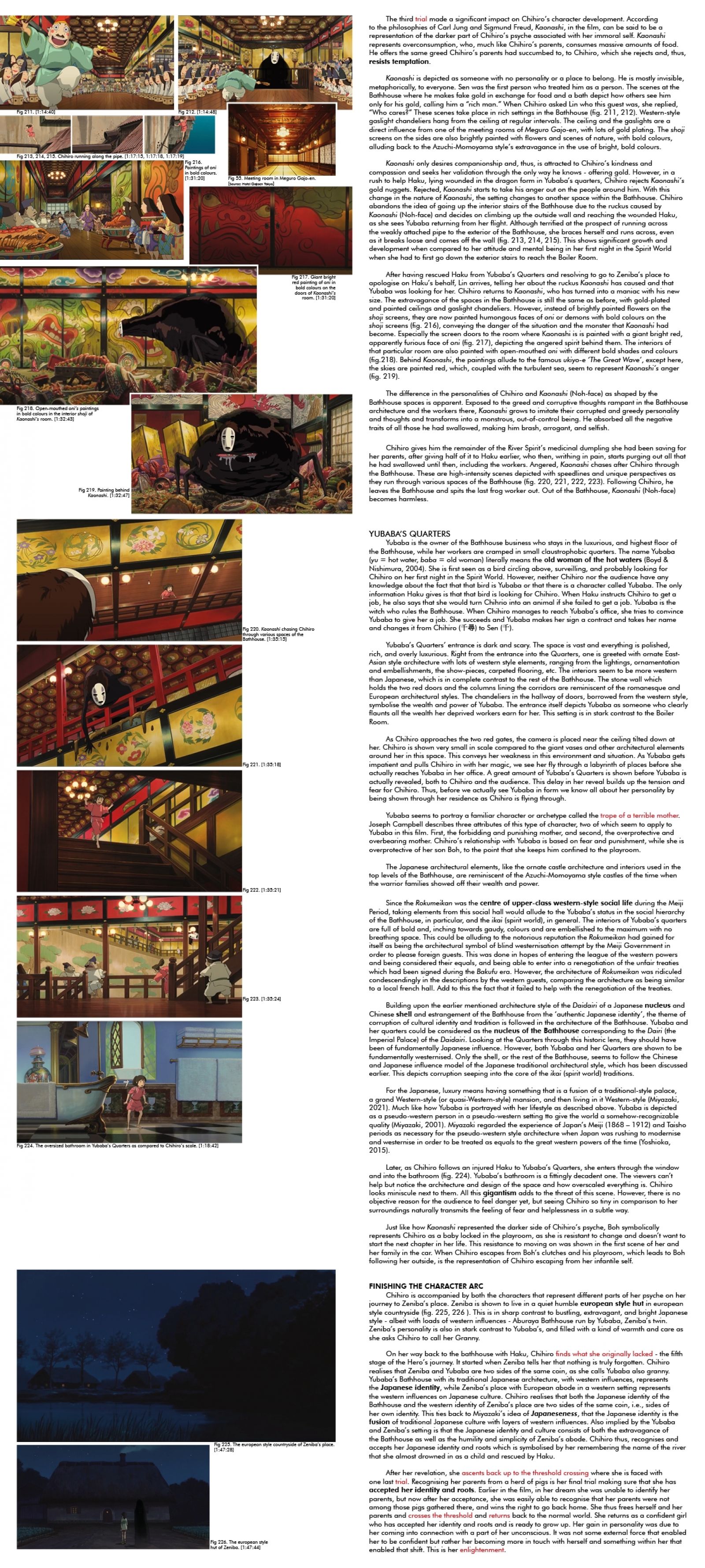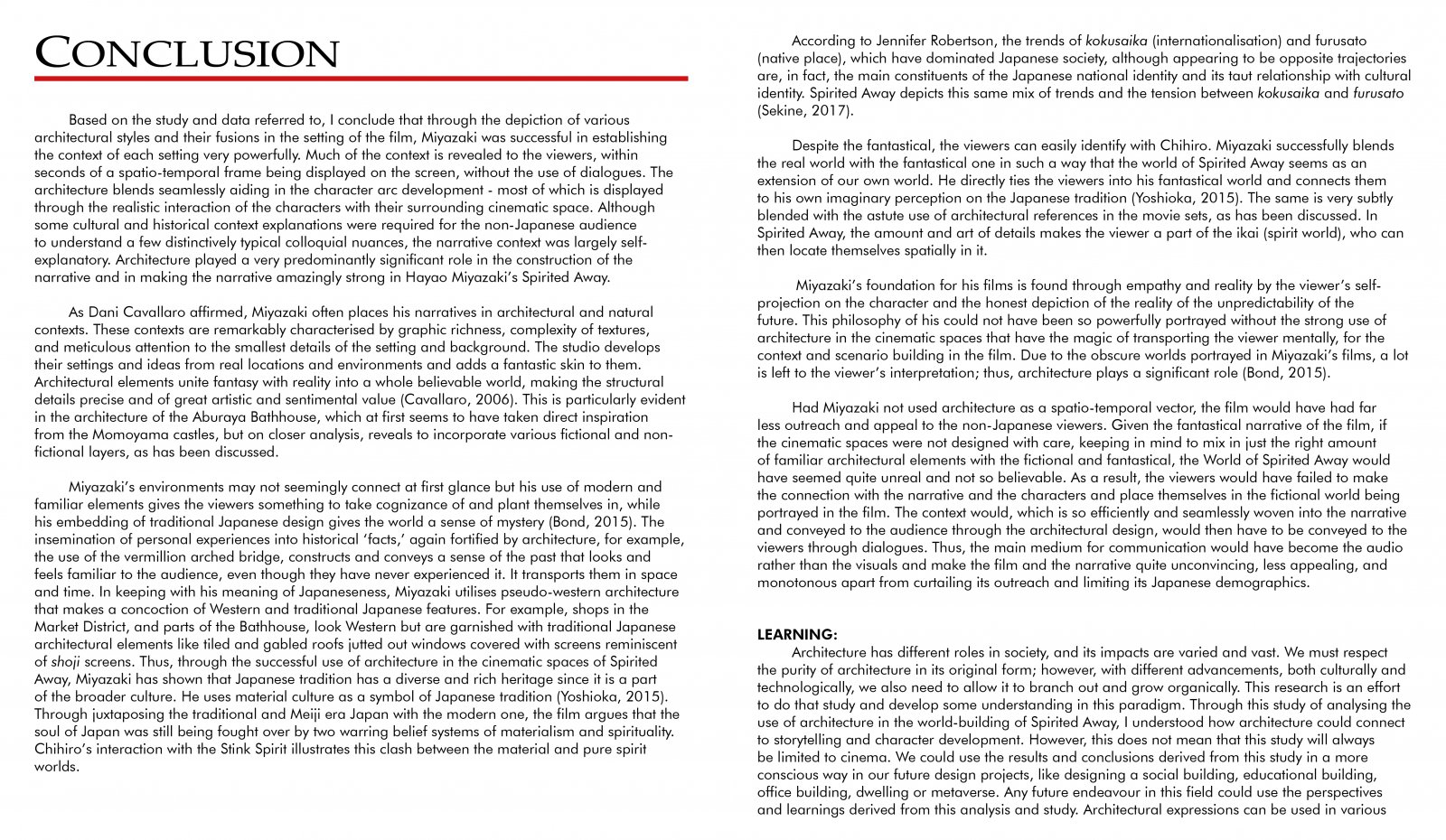Your browser is out-of-date!
For a richer surfing experience on our website, please update your browser. Update my browser now!
For a richer surfing experience on our website, please update your browser. Update my browser now!
Cinematic spaces have the potential to communicate narrative experiences to the audience as powerfully as those conveyed through the characters. The physical environment is a crucial and very powerful aspect of the narrative devices and storytelling as they support and build up the narrative apart from providing a backdrop for the characters.
Taking the specific case of the anime feature film ‘Spirited Away’ by Hayao Miyazaki, this paper is an in-depth study, of the astute use of architecture, in establishing the context of the narrative and the role and effect of architecture and cinematic spaces in aiding the development and build-up of the character arc in the anime feature film.

